Inspired by birds
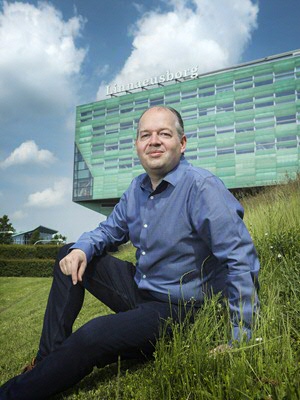
Birds are much more efficient flyers than drones. David Lentink, an aerospace engineer and biologist, studies birds in order to find new ways to fly, and also to better understand the biomechanics of bird flight. He recently moved from Stanford University to the University of Groningen, one of very few places where he can combine his love for engineering with his love for biology. Lentink is a fine example of the many UG researchers who take their inspiration from nature.
Text: René Fransen / Photos: Henk Veenstra
Lentink could be described as a generalist with a focus. ‘Extreme specialization makes it much harder to use ideas from outside your field of expertise’, he explains. He trained as an aerospace engineer at Delft University of Technology, followed by a PhD in zoology at Wageningen University & Research and a postdoc in organismal and evolutionary biology at Harvard University. ‘In my integrative research, I combine biology with technology.’ He doesn’t study birds just to improve his flying robots, he also wants to understand how birds function biologically. ‘Their ecology and evolution, the biomechanics, visual system and muscles are all important aspects to understand flight.’
The power of flapping wings
As an engineer, he has his own unique focus when studying birds. And what is more, he can invent his own equipment to perform studies that have never been done before. Traditionally, ways to measure the aerodynamics of bird flight require all kinds of assumptions. So, Lentink invented a bird cage with instrumented walls, an ‘Aerodynamic Force Platform’, in which he could directly measure the force created by flapping wings.
From whirring hummingbirds to quieter drones
‘This was a sophisticated engineering problem. I created a box with extremely lightweight, yet stiff carbon fibre sandwich panels, supported by specialized sensors on the walls to measure the pressure and shear forces induced by the flying bird.’ One of the discoveries the high-tech box revealed is that hummingbirds create lift during both the downstroke and the upstroke – and this explains the humming sound that they make. Lentink‘s results were featured on the Dutch NOS news channel in March 2021. This study has not only increased our knowledge of how hummingbirds hover, but it can also be used to design quieter drones and wind turbines.
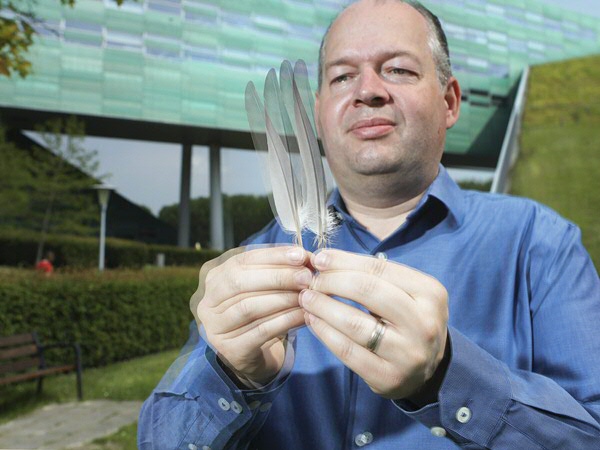
Unique one-way Velcro discovered
In the same way, his efforts to create a robot that would fly like a bird led to a biological discovery. ‘I was working on a hybrid model, in which real feathers were used.’ Feathers deform during flying, and can thereby compensate for turbulence in a way that a stiff aeroplane wing cannot. But how do birds prevent their feathers from being blown apart? Lentink demonstrates what he discovered with two feathers. He gently slides them over each other and, just before a space would appear between the feathers, they lock together. ‘This is the only unidirectional Velcro known to mankind’, he says. ‘There is no technological equivalent’. Microscopic 3D X-ray images showed that this achievement is created by thousands of tiny interlocking hooks that fasten the overlapping feathers.
UG: the dreamt environment
His unique combination of engineering skills and zoological knowledge helps him to make these discoveries. It is this combination that brought him to the Faculty of Science and Engineering in Groningen. ‘This Faculty has biologists studying different aspects of birds, an engineering department, control systems research and astronomers who could help me to figure out how birds use celestial patterns to navigate. It is a dream come true to have a laboratory in the Linnaeusborg.’
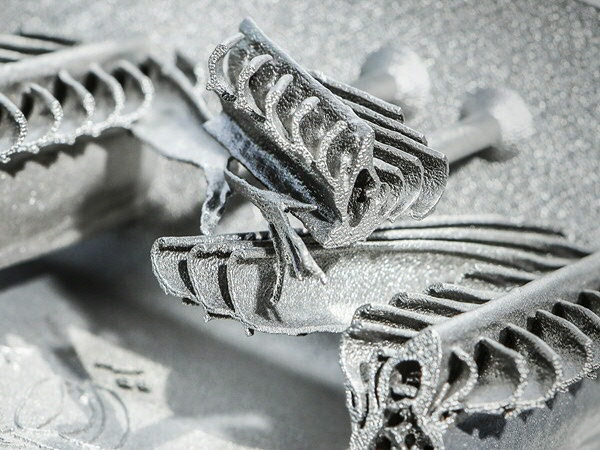
Taking inspiration from nature together
Lentink is group leader of a new Biomimetic research group within the Energy & Sustainability Research Institute Groningen (ESRIG), together with Eize Stamhuis (see below). ‘His focus is more on applied innovations, I am more oriented towards fundamental research, so we really complement each other.’ And the Faculty also has a broad range of bio-inspired research programmes (see below). ‘It’s like the aerospace industry: you need a lot of different specialists working together to build a plane.’
Understanding energy use during bird migration
Once his lab is up and running, with all the equipment from Stanford installed, he will tackle different questions relating to both biology and engineering. For example, together with biologists specialized in bird migration, he wants to understand how these birds minimize their energy use. ‘Formation flying could reduce the energy costs, but so far this has only been proven in fixed wing aeroplanes. Eize Stamhuis studies this using flapping wing models – wouldn’t it be cool if we could measure it directly in freely flying birds?’ That knowledge could again be used in drone development.
His main motivation in research, Lentink concludes, is to study exciting questions. ‘The best questions always result in a meaningful answer, something that increases our knowledge in biology, engineering or both.’
Other UG researchers who take their inspiration from nature include...
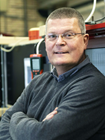
Eize J. Stamhuis
Eize Stamhuis concentrates on practical biomimetics in the areas of energy and sustainability. The work of his group is often driven by questions arising either from the industry or from technological problems. He actively looks for biological model systems or parallels that are then studied in great detail. He then translates these into a technical solution. Among other projects, the Stamhuis group is working on optimizing wind turbines at low wind speeds by applying unsteady aerodynamic principles used by albatrosses, and is also trying to simplify urban wind turbine blades using inspiration from winged seeds. Bird flight is taken as inspiration for the design of flapping wing drones. And different swimming techniques of fish inspire new ideas for propulsion and maneuvering systems for ships and underwater robots, while filter-feeding fish are used to optimize industrial filtration systems.
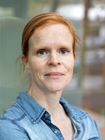
Marleen Kamperman
Marleen Kamperman’s research group works at the interface of chemistry, biology and physics and focuses on the development of biologically inspired materials capable of strong adhesion to wet and rough surfaces. Drawing inspiration from a diverse set of natural examples, her team uses different polymerization techniques to develop novel polymers that carry electrolytes and subsequently studies their adhesion and material properties.
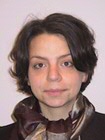
Nathalie Katsonis
The functional movement of living plants, animals and other organisms is supported by molecules that move randomly by themselves. The research group led by Nathalie Katsonis is working to uncover how such functional motion can be applied in artificial systems. Katsonis has shown how artificial molecular machines can drive the shape transformation of polymer springs, which mimic either the helical movement of plant tendrils or the explosive movement of seed pods. These results find their use in the field of soft and human-friendly robotics. Her group is also investigating how complex motility can be encoded into synthetic mimics of minimal life-forms, by coupling molecular chemistry to physical processes.

Ajay Kottapalli
Ajay Kottapalli’s research focuses on nature-inspired micro/nano sensors, biomimetic materials and sensors, micro/nanoelectromechanical systems (MEMS/NEMS), nanofabrication, flexible electronics, two-dimensional sensing materials and biomedical sensors. His group is implementing biological sensory designs into artificial MEMS/NEMS sensors by mimicking the sensing principle, morphology, material properties and functionality. These are integrated using novel soft polymer materials and two-dimensional sensing materials to fabricate sensors with ultra-sensitive sensing abilities. Various applications of such sensors in biomedical sensing and healthcare devices are being explored, in the pursuit for preventive maintenance, at-home healthcare and safe clinical practices.

Ming Cao
Ming Cao is working on using animal group behaviour as inspiration for designing, implementing and testing control algorithms for networks of autonomous robots. It has been a challenge to coordinate the actions of teams of autonomous robots when each robot has only limited information about its peers; together, their actions can be counter-productive even when each robot has a faithful intention to collaborate. Such control algorithms could be instrumental in the near future, for the success of the functioning of large numbers of smart autonomous robots and mobile sensors that are interconnected through networks.
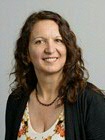
Elisabetta Chicca
In August 2020, Elisabetta Chicca established the Bio-Inspired Circuits and Systems group at the Zernike Institute for Advanced Materials and the Groningen Cognitive Systems and Materials Center (CogniGron). This group aims to develop biologically inspired learning, sensing and acting systems. To this end, Chicca is identifying the principles of neural computation and implementing them in fully parallel and low-power neuromorphic systems (artificial systems inspired by brain architecture) that offer the opportunity to overcome the limitations of traditional digital architectures. The physical substrate of these implementations consists of CMOS technology and novel materials.
More news
-
13 January 2026
New framework verifies AI-generated chatbot answers
